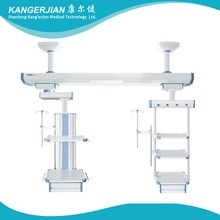Scientific name Hymenia recurvalis Fabricius Lepidoptera. Alias ​​sugar beetroot lees, sugar beet leaves. The distribution starts from Heilongjiang and Inner Mongolia in the north, and near the border line in the south and east. There are many occurrences in the middle and lower reaches of the Yellow River.
Host beets, leeks, cucumbers, green peppers, soybeans, corn, sweet potatoes, sugarcane, tea, etc.
The larvae are crippled by rolling leaves, feeding leaves and leaves veins.
Morphological characteristics Adult wings 24-26mm, brown body; Head white, black spots; dark brown tentacles; lower lip must be dark brown curved; chest black brown back, abdomen link white; dark brown wings, fore wings The room has a slanted corrugated wide black band with a white spot on the outer edge, a black spot on the outer rim of the hind wing, and dark brown with white on the margins; when the wings are unfolded, the leucorrhea is inverted with a octagonal shape. Oval oval-shaped, 0.6-0.8mm long, light yellow, transparent, irregular surface pattern. The mature larvae have a body length of about 17mm, a width of about 2mm, and are light and transparent. The two ends are fine and medium-thick, similar to the spindle shape, and the toe hooks are double-sequentially missing. The dragonfly is 9-11mm long, 2.5-3.5mm wide, yellow-brown, with 6-8 hooks on the hip spine.
Living habits occur in Shandong in the 1st and 3rd generations. They use old and mature larvae to make earthworms to make up the soil, and to overwinter in field weeds, stubble leaves or surface soil layers. Feathering began in late July of the following year until early September, with a duration of more than 40 days. Each generation of larval development period: the first generation from late July to mid-September, the second generation from late August to late September, the third generation from late September to early October, overlapping generations. Adults fly weak, eggs scattered at the veins, often 2-5 tablets together. Each female produces an average of 88 eggs. The egg period 3-10 days. The larvae eat day and night after hatching. The young larvae feed on the leaves on their backs, leaving the upper epidermis in the form of a sunroof, and a thin net when pulling the skin. After 3rd instar, the leaves were reticularly nicked. Larvae are 5 instars and have a developmental duration of 11-26 days. When the larvae matured, they became pink and began to pull the nets. After 24 hours, they turned yellow-green. Most of the larvae in the topsoil were pupa, and some were in the gaps between the litters or the petiole bases. Winter begins at the end of September or early October.
Control methods When larvae occur in large numbers, the use of chemical pesticides, such as phoxim, flufenthrin and other conventional concentrations are effective.
ICU Bridge Single-Arm Electric Medical Pendant(Electricity and Gas Separated) is composed two individual pendants, it`s the modern ICU necessary medical treatment auxiliary device, the character is reasonable divided into Electricity area and Gas area two parts, The Gas area configuration of flexible lifting IV stand. It could provide all kinds of medical gas, power for operation. Electricity and Gas area use cantilever structure, improved the treatment space, middle of the cross beam can be selected for lamps lighting treatment. It is convenient, intact and easy to use to meet the needs of operation.

Medical Pendant,Multi-function Medical Pendant,Column Medical Pendant,Medical Ceiling Pendant
Shandong qufu healthyou Medical Technology co.,Ltd , https://www.kangerjian-medical.com